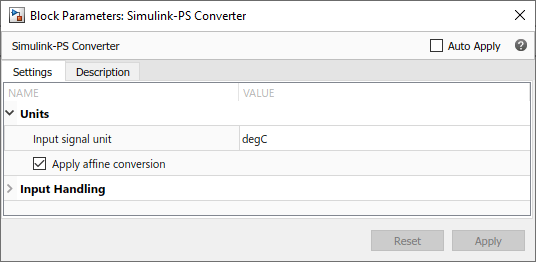How to Apply Affine Conversion
When you specify affine units for an input temperature signal, it is important to consider whether you need to apply affine conversion. Usually this decision depends on whether the signal represents absolute or relative temperature (see When to Apply Affine Conversion).
For example, you model a house-heating system, and you need to input the outdoor temperature. In the following diagram, the Constant source block represents the average outdoor temperature, in degrees Celsius, and the Sine source block adds the daily temperature variation. The average outdoor temperature, in this case, is 12 degrees Celsius. Daily variation with an amplitude of 8 makes the input outdoor temperature vary between 4 and 20 degrees Celsius.

This signal is an absolute temperature reading. Therefore, when
the signal converts into kelvin for further computations, you need
to specify that it should use affine conversion. Double-click the
Simulink-PS Converter block, type degC in the Input
signal unit field, and select the Apply affine
conversion check box.

As a result, the Simulink-PS Converter block outputs a value varying between 277 K and 293 K.